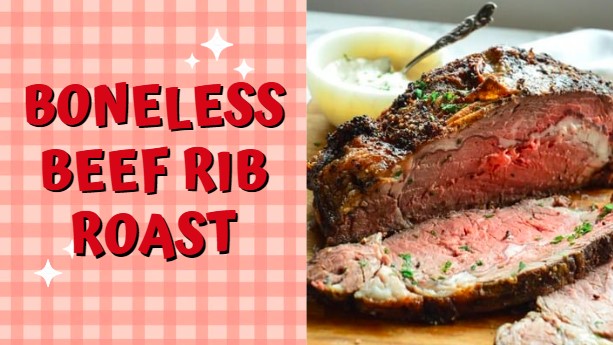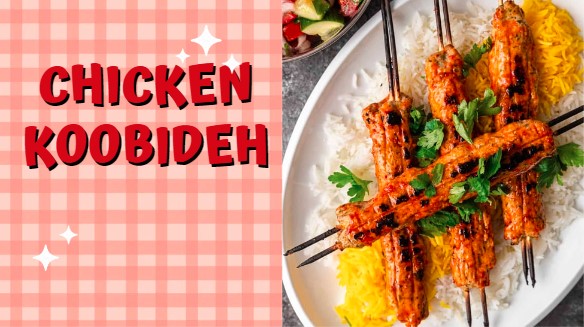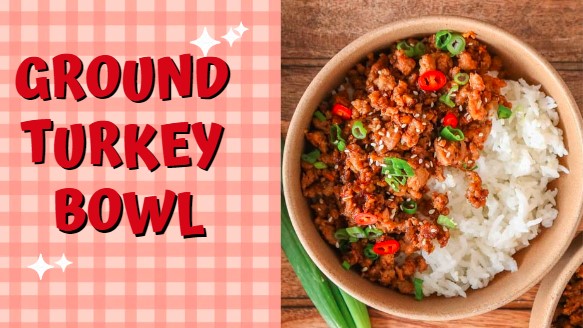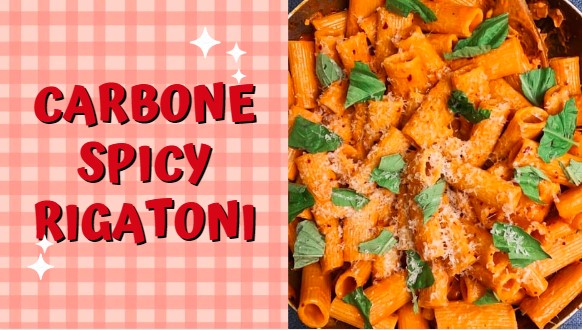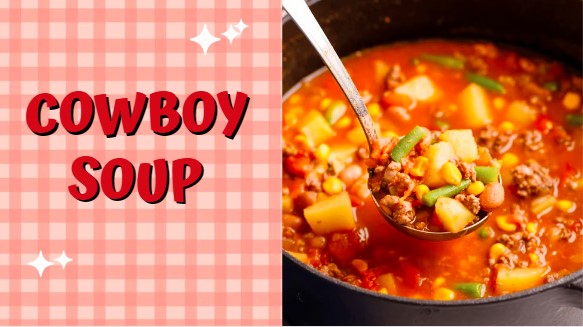A boneless beef rib roast, often hailed as one of the most succulent and flavorful cuts of beef, offers a truly luxurious dining experience. This premium cut, derived from the rib section of the cow, is known for its rich marbling, which enhances both flavor and tenderness. Cooking a boneless rib roast is an art that promises a memorable feast, especially when following a meticulously crafted recipe.
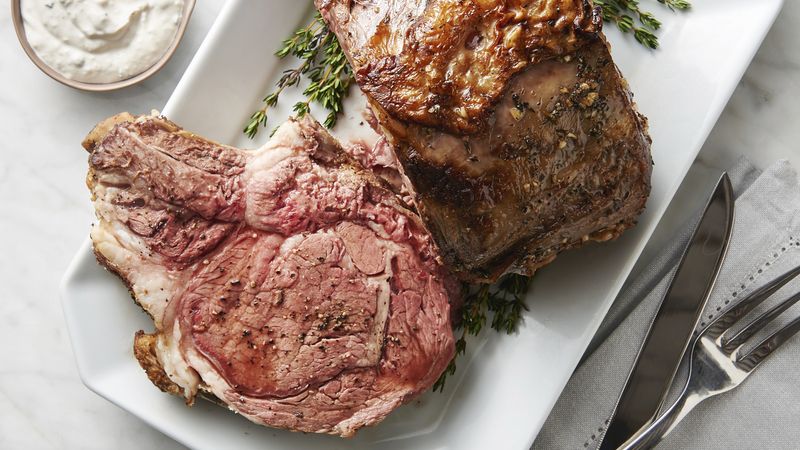
The allure of the boneless prime rib roast recipe lies in its simplicity and the profound flavors it elicits from the meat. Unlike its bone-in counterpart, the boneless rib roast is more manageable and quicker to cook, making it a popular choice for both novice cooks and seasoned chefs. The key to unlocking the full potential of this exquisite cut is in the slow-roasting process, which ensures that every slice is juicy and melt-in-your-mouth tender.
For those looking to master the perfect meal, a boneless rib roast recipe provides a straightforward yet elegant approach. Seasoning the roast with a blend of herbs and spices can elevate the natural flavors of the beef, while a proper resting time after roasting ensures that each bite is as delicious as the last. Whether it’s a special occasion or a simple family dinner, a boneless rib roast stands out as a centerpiece that never fails to impress.
Kitchen Tools Needed
Ingredients for Boneless Beef Rib Roast
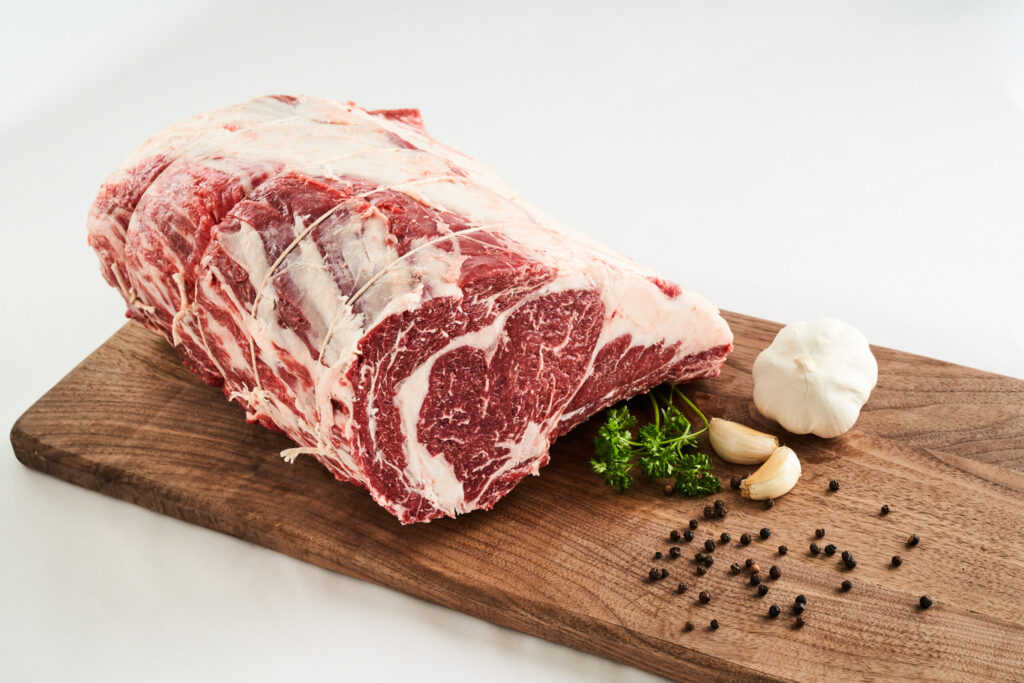
How To Make Boneless Beef Rib Roast ?
Preparing the Roast
Begin by preheating your oven to 350 degrees Fahrenheit (175 degrees Celsius). While the oven heats, take your boneless rib roast and pat it dry with paper towels. This helps the seasoning adhere better and ensures a good sear. Rub the entire surface of the roast with olive oil, which not only adds flavor but also helps the seasoning to stick evenly.
Seasoning the Meat
In a small bowl, mix together the kosher salt, freshly ground black pepper, garlic powder, dried thyme, and dried rosemary. Sprinkle this seasoning blend liberally all over the roast, pressing gently to ensure it adheres well. The herbs and spices will create a flavorful crust as the meat cooks.
Roasting
Place the seasoned roast in a roasting pan, preferably on a rack to allow even heat circulation. Insert a meat thermometer into the thickest part of the roast, making sure it doesn’t touch any fat or bone. Roast in the preheated oven. The cooking time will depend on your preferred level of doneness: about 20-25 minutes per pound for medium-rare.
Basting
Halfway through the cooking time, baste the roast with the melted butter. This will help to keep it moist and add a rich flavor to the crust. Continue roasting until the meat thermometer reads 135 degrees Fahrenheit (57 degrees Celsius) for medium-rare.
Resting the Roast
Once the roast reaches your desired temperature, remove it from the oven. Cover it loosely with aluminum foil and let it rest for at least 20 minutes. Resting allows the juices to redistribute throughout the meat, making it juicier and easier to slice.
Carving and Serving
After the resting period, transfer the roast to a cutting board. Using a sharp carving knife, slice the meat against the grain into thick or thin slices according to preference. Serve immediately, perhaps with a side of roasted vegetables or a simple salad to complement the rich flavors of the beef.
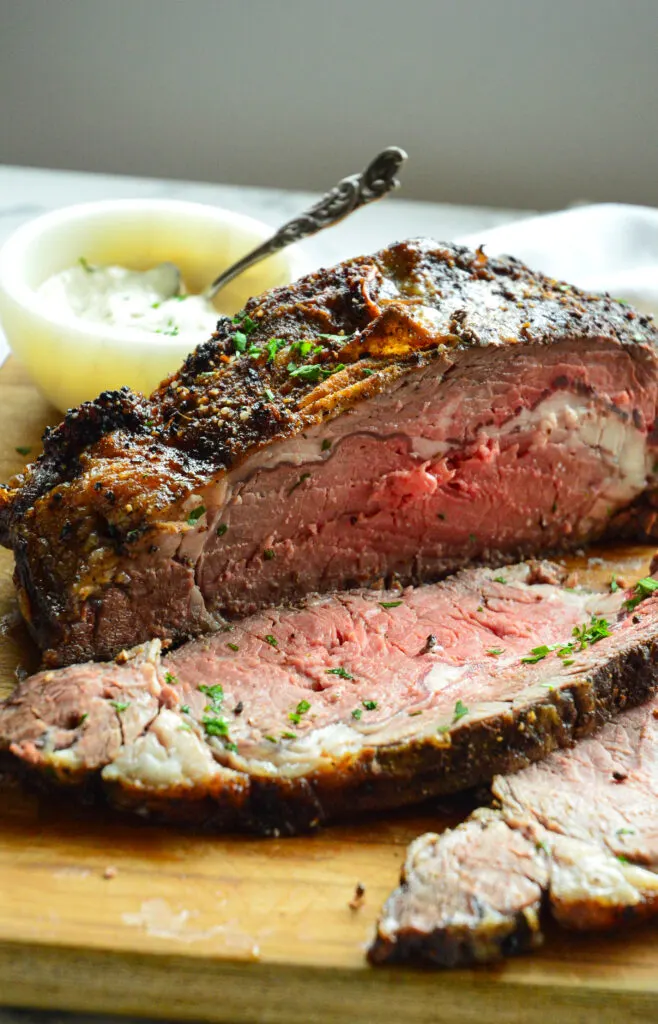
What To Serve With Boneless Beef Rib Roast?
Health Benefits Of Boneless Beef Rib Roast

Tips and Tricks
Variations

Substitutions
Making Ahead
Storage
Reheating Of Boneless Beef Rib Roast

Nutritional Facts per 3-ounce serving
- Calories: 210-250
- Protein: 22-25 grams
- Total Fat: 14-18 grams
- Saturated Fat: 6 grams
- Monounsaturated Fat: 7 grams
- Polyunsaturated Fat: 0.5 grams
- Cholesterol: 70-75 mg
- Sodium: 50-60 mg
- Carbohydrates: 0 grams
- Fiber: 0 grams
- Sugars: 0 grams
- Vitamin B12: 2.5 μg (over 100% DV)
- Zinc: 4.5 mg (30% DV)
- Selenium: 28 μg (40% DV)
- Iron: 2-3 mg (15% DV)
- Niacin (Vitamin B3): 8 mg (40% DV)
- Vitamin B6: 0.6 mg (30% DV)
- Phosphorus: 180 mg (18% DV)
Delicious Beef Recipes
Delicious Beef With Garlic Sauce Recipe
Perfect Beef Bottom Round Roast Recipe
Frequently Asked Questions – FAQ’s
Boneless Beef Rib Roast
Course: MainCuisine: AmericanDifficulty: Easy4
servings15
minutes1
hour30
minutes330
kcalIngredients
Boneless Rib Roast – Approximately 2 to 3 pounds (about 1 to 1.5 kilograms) to serve four people.
Olive Oil – 2 tablespoons, for coating the roast before seasoning.
Kosher Salt – 2 teaspoons, to draw out the flavors and enhance the meat.
Black Pepper – 1 teaspoon, freshly ground, for a robust flavor.
Garlic Powder – 1 teaspoon, for a touch of aromatic warmth.
Thyme – 1 teaspoon, dried, to add a subtle earthy flavor.
Rosemary – 1 teaspoon, dried, for its fragrant, piney aroma.
Butter – 2 tablespoons, for basting the roast to add richness and color.
Directions
- Begin by preheating your oven to 350 degrees Fahrenheit (175 degrees Celsius). While the oven heats, take your boneless rib roast and pat it dry with paper towels. This helps the seasoning adhere better and ensures a good sear. Rub the entire surface of the roast with olive oil, which not only adds flavor but also helps the seasoning to stick evenly.
- In a small bowl, mix together the kosher salt, freshly ground black pepper, garlic powder, dried thyme, and dried rosemary. Sprinkle this seasoning blend liberally all over the roast, pressing gently to ensure it adheres well. The herbs and spices will create a flavorful crust as the meat cooks.
- Place the seasoned roast in a roasting pan, preferably on a rack to allow even heat circulation. Insert a meat thermometer into the thickest part of the roast, making sure it doesn’t touch any fat or bone. Roast in the preheated oven. The cooking time will depend on your preferred level of doneness: about 20-25 minutes per pound for medium-rare.
- Halfway through the cooking time, baste the roast with the melted butter. This will help to keep it moist and add a rich flavor to the crust. Continue roasting until the meat thermometer reads 135 degrees Fahrenheit (57 degrees Celsius) for medium-rare.
- Once the roast reaches your desired temperature, remove it from the oven. Cover it loosely with aluminum foil and let it rest for at least 20 minutes. Resting allows the juices to redistribute throughout the meat, making it juicier and easier to slice.
- After the resting period, transfer the roast to a cutting board. Using a sharp carving knife, slice the meat against the grain into thick or thin slices according to preference. Serve immediately, perhaps with a side of roasted vegetables or a simple salad to complement the rich flavors of the beef.
Conclusion
The boneless beef rib roast stands as a true testament to the art of roasting, blending simplicity with culinary finesse to create a dish that is both elegant and heartily satisfying. Its rich flavors and tender texture make it a favorite for special occasions and holiday meals. By following the guidelines for seasoning, cooking, and serving, anyone can achieve a beautifully roasted masterpiece that is sure to impress guests.
The versatility of this cut allows for various preparation methods and pairings, ensuring that each roast can be uniquely tailored to suit any palate. Whether dressed up with a herb crust or served with classic side dishes, the boneless beef rib roast remains a timeless, delectable centerpiece that celebrates the joy of cooking and eating well.

